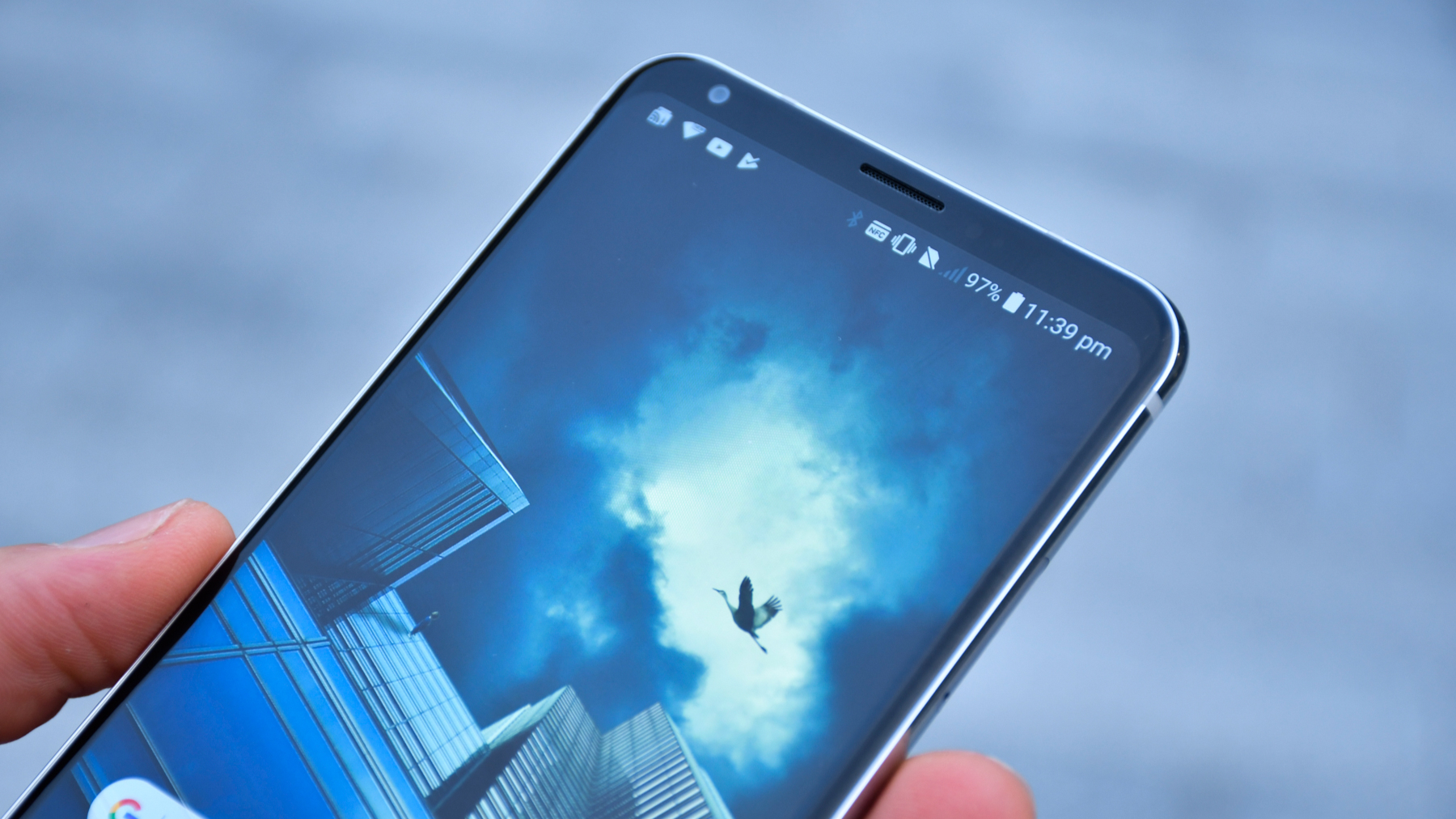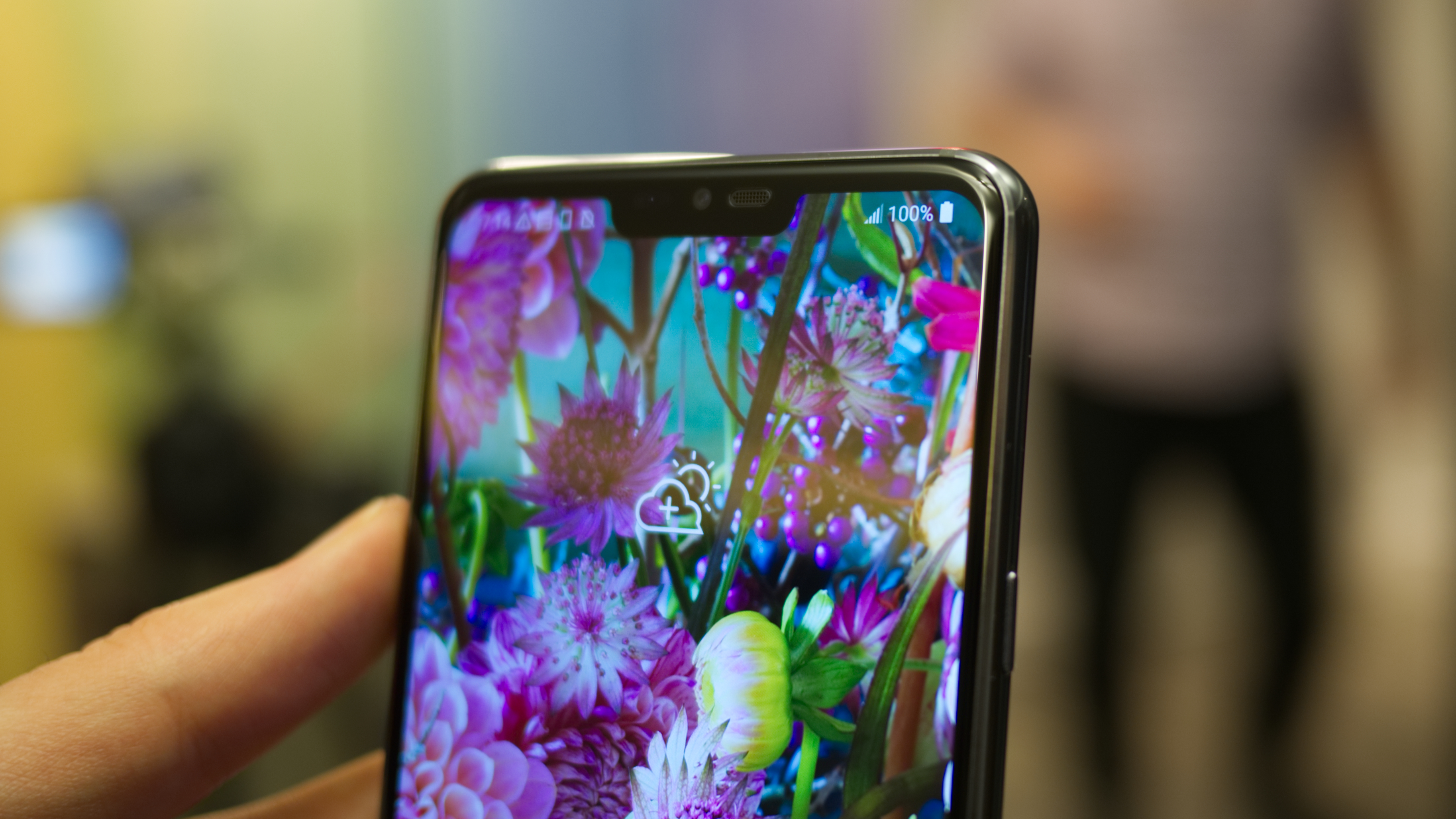LG G7 ThinQ vs LG V30
Can LG’s latest beat out its 2017 contender?

It’s difficult to choose between phones, especially when they’re made by the same company. Focusing on the new LG G7 ThinQ and 2017’s LG V30, we’re going to split apart their offerings to help you get a clear idea of where your money should go if you’re ready to upgrade.
Since deciding factors range from specs, design and features, we’ll be sure to touch on all of it so that you can make the best decision possible from a value perspective.
Looking to see how LG's new phone stacks up against some other options? Check out the links below.
Design
The new G7 ThinQ and the V30 are cut from a similar mold in that they both are glass-covered smartphones with durable aluminum frames. From afar, they may look similar enough, but up close there are some real differences to behold.
Starting with their respective fronts, the G7 ThinQ differs with its 19.5:9 aspect ratio, improved over the V30’s 18:9 screen all thanks to its optional notch. Said notch houses the front-facing camera and all of the usual sensors, but otherwise, the two phones closely mirror each other with their chin bezels.
Watch our hands on LG G7 ThinQ video below to see the phone in action
Button placement varies wildly between the two phones. While the V30 maintained LG’s usual execution of doubling up the fingerprint sensor’s duty as a power button, the power button is now shifted to the right side of the G7 ThinQ.
Sign up for breaking news, reviews, opinion, top tech deals, and more.
Opposite to the power button, there’s a volume rocker and a new Google Assistant button just below it. Regarding the latter, you’ll find no such thing on the V30 and your mileage will certainly vary with the inclusion of a dedicated voice assistant button.

The G7 ThinQ utilizes a dual-lens camera system on its back, like the V30, but it’s now aligned vertically in the center of the phone.
Lastly, the 3.5mm headphone jack makes its return for those who enjoy wired listening.
Display
LG impressed with the V30’s 6-inch OLED display, which made it the company’s first Google Daydream-ready phone. But it was good for more than just VR – movies, TV shows and images look stellar on the vibrant screen.
Now, LG has switched back to LCD for the G7 ThinQ. Though it won’t allow for VR, it’s still very colorful and capable, enough so to earn HDR certification. With its notch, the G7 has a resolution of 3,120 x 1,440. This is a sizeable increase in screen real estate compared to the V30’s 2,880 x 1,440 display.

In addition to a boost in resolution, LG has put more effort into rethinking outdoor readability of its G7 ThinQ LCD display. Its 6.1-inch screen shines at 1,000 nits – its highest ever – to allow for better viewing angles outdoors. During our initial hands-on with the phone, it definitely makes a difference, but we note that Samsung, too, has excelled with bright screens on its phones in the past.
OS and power
The LG V30 has been slow to adopt Android Oreo, but it has done so in most regions. On the other hand, the G7 ThinQ will come with Android Oreo out of the box and we have our fingers crossed for a fast update to Android P when it releases later in 2018.
In terms of power, the G7 ThinQ outclasses the V30 in terms of its Snapdragon 845 chipset, which promises boosted power and efficiency over last year’s Snapdragon 835. Don’t get us wrong, the 835 is still plenty capable for most, if not all smartphone tasks and games, but it’s old news compared to Qualcomm’s latest, more efficient chipset.
Regarding RAM, you’ll get a different story depending on where you live. Outside of the US and UK, the G7 ThinQ may arrive with 6GB of RAM, but only 4GB in the US. So, it ranges from cutting-edge in its offering to being simply on-par with much of what we’ve seen in smartphones throughout 2017. As phones inch toward including 8GB of RAM, 4GB is becoming long in the tooth, not necessarily in terms of a performance bottleneck, but for value. You’re not getting enough for your money here compared to last year’s V30.

Camera and battery
The cameras built into the G7 ThinQ appear to be more capable than what’s in the V30. Stocked with two 16MP lenses on its rear, it should handily beat out last year’s phone that had a 16MP and 13MP camera system. We’ll be testing this out for the final review, so head over there for in-depth findings.
Carrying on LG’s wide-angle legacy, the G7 ThinQ goes big, but not as big as phones before it. Compared to the LG V20’s 135-degree field of view on back and the V30’s 120, the G7 ThinQ goes up to 107-degrees, a value that LG says reduces the fish-eye effect seen on previous models.
Shifting focus to battery, LG has opted for a smaller 3,000mAh capacity for the G7 ThinQ compared to the V30’s respectable 3,300mAh. Given that LG’s new phone is .6mm thicker than the V30, it really doesn’t make a whole lot of sense why LG couldn’t use that space for a bigger battery.
Lastly, both phones support wireless charging thanks to their glass backs.
Price
The G7’s price isn’t currently known, but we’re hoping it’s more affordable than the likes of the iPhone X. During a pre-brief, LG told TechRadar that carriers will set the pricing, but that an unlocked version will be in the range below more expensive options. Realistically and optimistically, this places it in the $700-$849 price range.
Last year, the V30 launched at $809, £799 in the UK and AU$1,199 in Australia. Since then, it has dropped a fair amount, but you’re likely to find it for around $700.
Takeaway
The takeaway here isn’t as decisive as you might hope. LG’s recent phones have raised the bar in terms of features and build quality, so it’s a positive shift in a sense that they don’t depreciate as quickly.
Compared to the V30, the G7 ThinQ is all but guaranteed to receive the more exciting updates and new features as time wears on. Additionally, the camera performance and gaming experience should be a nice step above what 2017’s V30 brought along.
At the same time, you’re not really at a loss should you opt for the V30. You’ll pay less and, depending on your preferences, the OLED display might be more to your liking.

Cameron is a writer at The Verge, focused on reviews, deals coverage, and news. He wrote for magazines and websites such as The Verge, TechRadar, Practical Photoshop, Polygon, Eater and Al Bawaba.